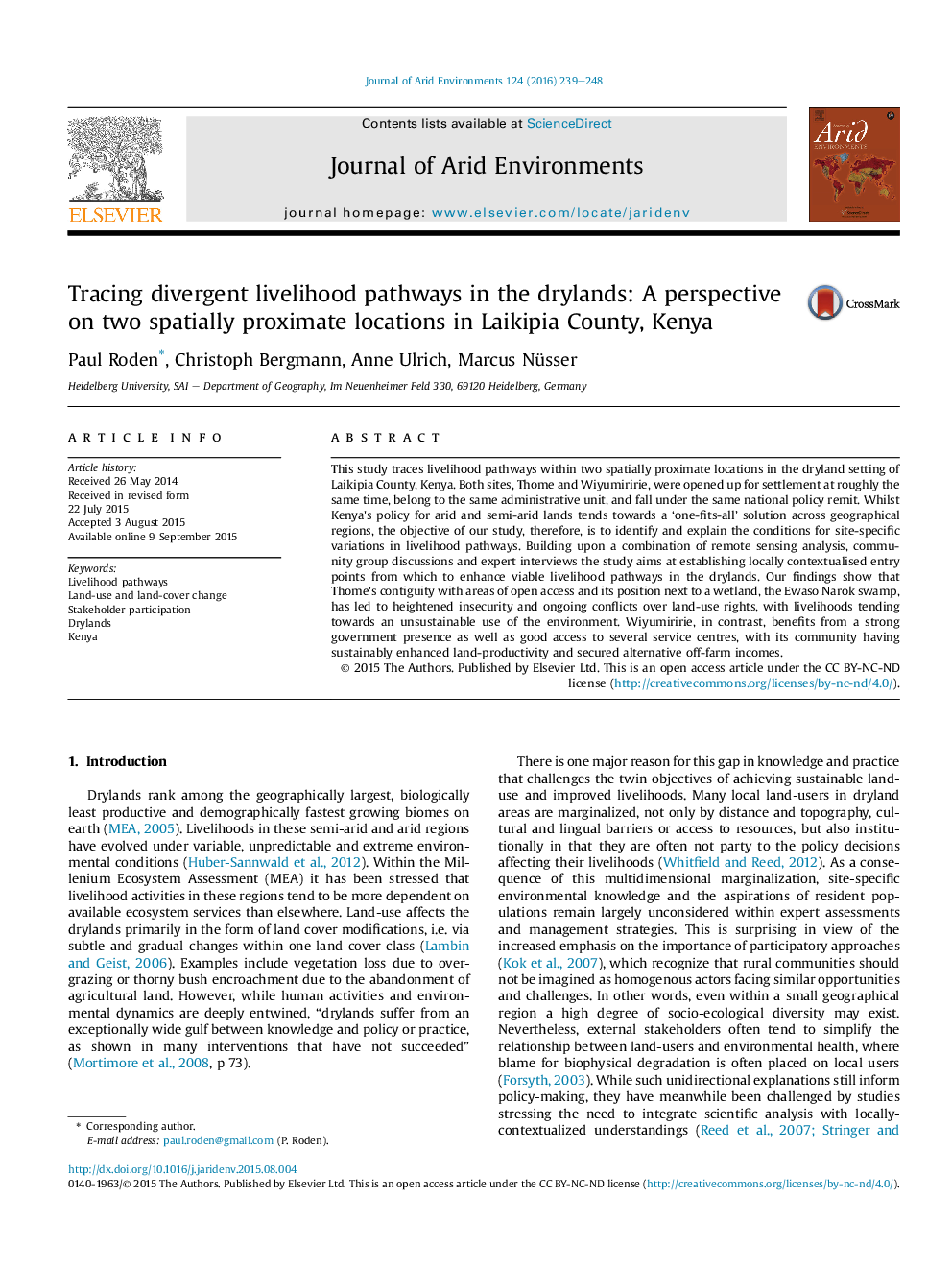| Article ID | Journal | Published Year | Pages | File Type |
|---|---|---|---|---|
| 6303390 | Journal of Arid Environments | 2016 | 10 Pages |
Abstract
This study traces livelihood pathways within two spatially proximate locations in the dryland setting of Laikipia County, Kenya. Both sites, Thome and Wiyumiririe, were opened up for settlement at roughly the same time, belong to the same administrative unit, and fall under the same national policy remit. Whilst Kenya's policy for arid and semi-arid lands tends towards a 'one-fits-all' solution across geographical regions, the objective of our study, therefore, is to identify and explain the conditions for site-specific variations in livelihood pathways. Building upon a combination of remote sensing analysis, community group discussions and expert interviews the study aims at establishing locally contextualised entry points from which to enhance viable livelihood pathways in the drylands. Our findings show that Thome's contiguity with areas of open access and its position next to a wetland, the Ewaso Narok swamp, has led to heightened insecurity and ongoing conflicts over land-use rights, with livelihoods tending towards an unsustainable use of the environment. Wiyumiririe, in contrast, benefits from a strong government presence as well as good access to several service centres, with its community having sustainably enhanced land-productivity and secured alternative off-farm incomes.
Related Topics
Physical Sciences and Engineering
Earth and Planetary Sciences
Earth-Surface Processes
Authors
Paul Roden, Christoph Bergmann, Anne Ulrich, Marcus Nüsser,
